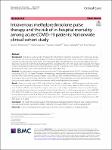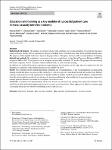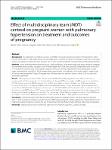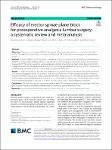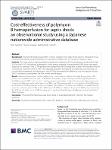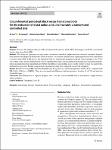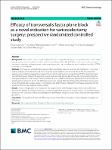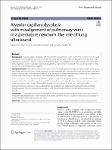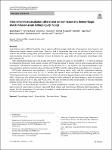Search
Author
- Osman, Ahmed I. (5)
- Daqing, Ma (3)
- Jorgensen, Ed (3)
- Li, Yan (3)
- next >
Subject
- kinh tế (26)
- Economics (12)
- programming (10)
- XRD (10)
- next >
Date issued
- 2020 - 2025 (2129)
- 2010 - 2019 (129)
- 2000 - 2009 (9)
- 1999 - 1999 (1)
Has File(s)
Search Results
Steroids are widely used to modulate the inflammatory reactions associated with coronavirus disease 2019 (COVID-19); however, the optimal upper limit dose of steroid use for acute COVID-19 care remains unclear and currently available data may suffer from a time-dependent bias of no effectiveness or reversed causation given the desperate situation of treatment during this pandemic. Accordingly, the aim of this study was to elucidate the impact of intravenous pulse therapy with methylprednisolone (500 mg or greater per day) on the risk of in-hospital mortality among patients with COVID-19 by controlling for time-dependent bias. |
The increase in terrorist attacks with sometimes devastating numbers of victims has become a reality in Europe and has led to a fundamental change in thinking and a reorientation in many fields including health policy. The purpose of this original work was to improve the preparedness of hospitals and to provide recommendations for training. |
The importance of multidisciplinary team (MDT) centred on pregnant women with pulmonary hypertension (PH) has been highlighted. However, rare studies have explored its effects on pregnancy outcomes. This study seeks to investigate whether and how the MDT has an effect on the treatment and outcomes of PH pregnant women. |
The erector spinae plane (ESP) block is a newly defined regional anesthesia technique first described in 2016. The aim of this meta-analysis is to assess the efficacy of ESP block in improving analgesia following lumbar surgery. |
Polymyxin B hemoperfusion (PMX) removes endotoxin from septic shock patients. Although the treatment has been clinically used for more than 20 years, its cost-effectiveness has not been evaluated in detail. |
To assess the analgesic efficacy of the circumferential periosteal block (CPB) and compare it with the conventional fracture hematoma block (HB). |
Varicocele occurs as a result of dilatation of the pampiniform plexus in the spermatic veins. In this study, our primary aim was to evaluate the effect of Transversalis Fascia Plane Block (TFPB) on pain scores in the postoperative period in patients undergoing varicocelectomy surgery, and our secondary aim was to evaluate the effect of TFPB on analgesic consumption. |
Ablation of malignant pulmonary nodules is a novel therapeutic option for patients who cannot undergo surgery. Current transthoracic approaches cause pneumothorax and/or bleeding in a significant number of cases. |
Alveolar capillary dysplasia with misalignment of pulmonary veins (ACD/MPV) is a lethal neonatal lung disorder characterized by the decrease of the alveolar units, abnormalities in the air–blood barrier of the lung, and impaired gas exchange. Typically, it affects a full-term newborn; the symptoms usually start within a few hours after birth, resulting in severe respiratory distress and pulmonary hypertension. In most of the cases, this disorder is refractory to conventional pulmonary support. |
Acute kidney injury (AKI) is frequently seen in patients with hemorrhagic shock due to hypotension, tissue hypoxia, and inflammation despite adequate resuscitation. There is a lack of information concerning the alteration of renal microcirculation and perfusion during shock and resuscitation. The aim of this study was to investigate the possible role of renal microcirculatory alterations on development of renal dysfunction in a pig model of non-traumatic hemorrhagic shock (HS) induced AKI. |

